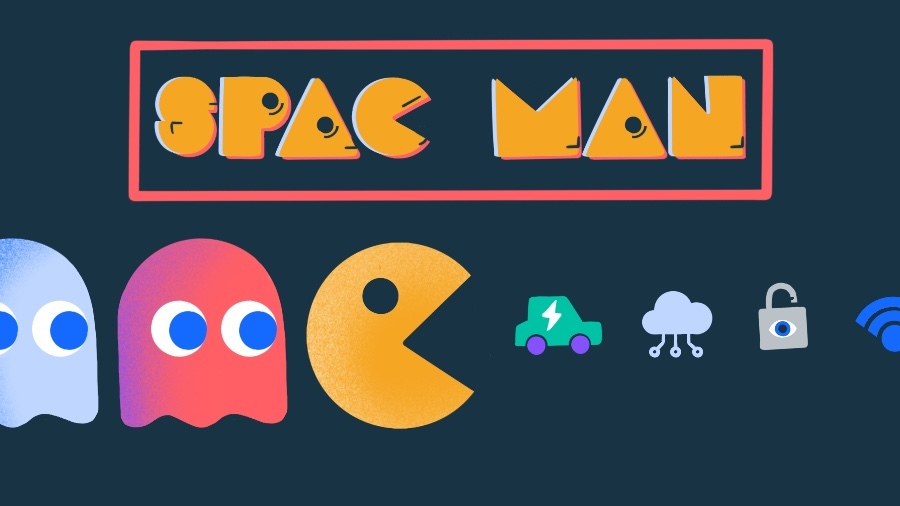Electric vehicle and greentech companies have proven to be the sweethearts of the SPAC universe thus far when it comes to merger targets, but the question remains: where could they look next?
Subscribe to the Crunchbase Daily
In the last 15-plus months, more than 550 special purpose acquisition companies, or SPACs, have gone public. Of those, more than 400 are still actively seeking their target, according to SPACInsider. While not all of those SPACs are looking solely at tech, the sector has proven popular with the new financial tool.
However, as the number of EV and greentech companies with public market credentials begin to dwindle, those who watch the industry think traditional software, social media, quantum computing, fintech and more could be eyed by SPACs as competition heats up and investors seek out new corners of tech.
Fairly agnostic
EVs and other greentech/cleantech sectors have been widely popular with SPACs. That’s because while those sectors may eschew some of the traditional public market metrics investors typically seek, they also fit the criteria SPACs love: high-growth with significant long-term potential.
Dozens of SPAC deals have been announced in the last year, including the one between Lucid Motors and Churchill Capital Corp. IV that gave the company an initial pro forma valuation of $24 billion in February.
SPACs likely will continue to seek out companies with similar growth metrics, with investors having proven to be fairly industry sector agnostic, said Ran Ben-Tzur, a partner at law firm Fenwick & West. Rather than zero in on specific industries, SPACs instead have looked for good value before any certain market category, he said.
“SPACs are very aggressive and go for quality,” Ben-Tzur said.
Nevertheless, Ben-Tzur said Lidar — or light detection and ranging — technology for autonomous cars and 3D printing could be attractive as they are the type of “forward-looking” businesses SPACs often desire.
Just last week, Lidar company Innoviz Technologies completed its merger with Collective Growth Corp., a SPAC.
Software, social media and quantum computing likely will be looked at by SPACs also, he added. Last month, IonQ said it would go public through a merger with blank-check firm dMY Technology Group Inc. III, making it the first pure play quantum computing company to be publicly traded and giving it an initial pro forma valuation of $2 billion. In software, late last year SPAC Apex Technology entered into a definitive agreement to acquire software provider AvePoint.
Cybersecurity could attract some attention, said Patrick Galley, CEO and CIO of RiverNorth Capital Management.
“It is a growing sector and a hot topic right now,” he said. “You could see how it would be appealing.”
However, cybersecurity also sees a lot of traditional consolidation and the competition may make it less appealing to SPACs — especially when considering the price tag, Ben-Tzur said.
“Also, valuations are still high” in security, he added.
Ben-Tzur points out SPACs often do play a sort of follow-the-leader game, with one blank-check company finding its target in a certain industry and then multiple others following suit.
“You’ll see one do a transaction in a sector and shortly thereafter others will follow,” he said.
Bill Nelson, a partner in the capital markets practice at Shearman & Sterling, said energy transition and even traditional energy have proven popular to SPACs, as has fintech/SaaS.
Just late last month, Foley Trasimene Acquisition Corp. II acquired secure payment platform Paysafe.
“It’s front and center,” Nelson said of fintech.
Along with fintech, direct-to-consumer technologies and health care tech also will be eyed by SPACs due to their growth projections, said David Weisberg, a director at investment bank and advisory firm Stout.
Nelson, however, agrees SPACs are pretty industry agnostic. Targets generally are industries that have IPO-ready companies that can benefit from the certainty and speed of a De-SPAC — or merger — process.
“Any industries that have public-ready companies and high-growth projections are targets for SPACs,” he said.
The newly introduced $2 trillion infrastructure bill by President Joe Biden could make SPACs eye more clean energy companies in wind and solar, although that still has yet to be determined, Nelson added.
A slowdown?
One last aspect to consider when looking at what might be the next sector to turn the heads of blank-check acquirers is examining when — if ever — if the SPAC splurge may end.
While 306 SPACs have gone public this calendar year, only a dozen have done so since March 25, according to SPACInsider.
“There’s some softness in the SPAC IPO market,” Galley said.
Ben-Tzur said it is too early to tell if any slowdown will continue, but added the fact some SPACs have hit rough spots in the public market recently and some investors are taking money off the table for PIPEs — the supplemental capital raised by most SPACs to help complete merger deals — may have contributed to a slower start for the spring season.
Nevertheless, SPACs have over the past year-plus proven to be appealing both to investors and to companies looking for cash.
Galley said SPACs have opened up the market to everyone to high-growth companies normally only accessible to a few. “SPACs have become a vehicle for the general public and retail investors to access what normally only has been available to VCs,” he said.
For companies, Ben-Tzur said, many like the speed of getting to the public market with the price certainty that SPACs bring. He sees many companies weighing either a private round or going public via a SPAC. That decision often just comes down to the value the SPAC sees in the company.
“SPACs often come up with a higher valuation,” he said.
Illustration: Dom Guzman

Stay up to date with recent funding rounds, acquisitions, and more with the Crunchbase Daily.




![Illustration of a guy watering plants with a blocked hose - Global [Dom Guzman]](https://news.crunchbase.com/wp-content/uploads/quarterly-global-3-300x168.jpg)
67.1K Followers